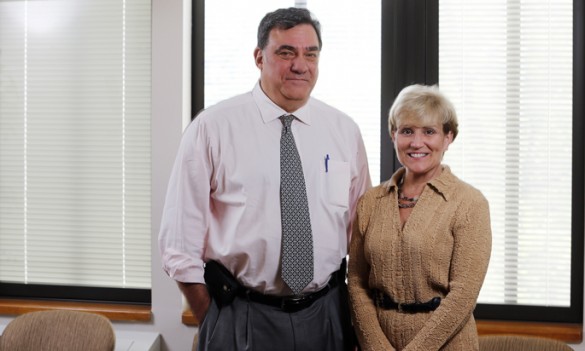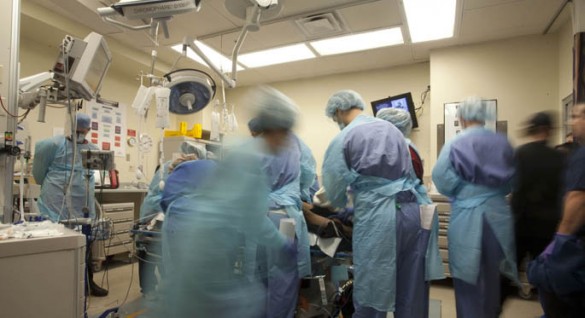
Vanderbilt University Medical Center will undertake sweeping changes to ensure smoother, more tightly coordinated transitions from the hospital to each patient’s home or other post-acute care setting.
The effort will include such measures as greater coordination with sub-acute care facilities, nursing homes, rehabilitation hospitals, hospice care and home health agencies across the region, daily multidisciplinary transition planning huddles on inpatient units, a centralized “SWAT team” to assist especially complex discharges, standardized patient follow-up (including post-discharge phone calls and the setting of clinic appointments prior to discharge) and increased attention to patient teaching and the management of discharge medications.
The initiative will begin with adult patients and will build on a great many established clinical services improvement efforts. VUMC officials say the changes will improve patient outcomes and satisfaction and lower hospital readmission rates.
“Hospitals haven’t historically managed well the movement from inpatient settings to post-acute care, or to home, for that matter. We historically haven’t created good follow-up to monitor the next stage of care. We can do much better,” said David Posch, chief executive officer of Vanderbilt University Hospital and Clinics, adding that improving transitions will be a central theme in VUMC’s ongoing efforts to increase value for patients.
The federal government and other health care payers are united in the view that such patient transitions need improvement. Medicare has begun reducing payments to hospitals whose 30-day readmission rates exceed the national average. For any hospital that serves as many Medicare patients as VUH does, the reductions could amount to several million dollars per year in lost revenue.
Conversely, health care reform has begun to introduce payment models that reward hospitals and providers for keeping patients healthy and out of the hospital.
Picked to lead the VUMC initiative are John Morris Jr., M.D., VUH associate chief of staff and professor of Surgery and Biomedical Informatics, and a recent management recruit, Beth Anctil, MSN, R.N., in the newly created role of director of transition management.
Morris has begun assembling a regional network of post-acute care facilities, along with new internal resources needed to coordinate care across this network. The initial focus is on helping VUH patients who lack health insurance find access to post-acute care. Too often, uninsured inpatients who are on the mend remain at VUH when they would be more appropriately served by a long-term care facility or a home health provider.
Taking a novel approach, VUH has decided to pay for post-acute services for some uninsured patients within the new network, on an as-needed, case-by-case basis. More than 60 patients are already benefiting from this assistance from VUH.
“We’re calling this a ‘scholarship’ program, the point being that we’re not applying this assistance automatically to our uninsured inpatients. They undergo formal evaluation to qualify for this aid,” Morris said.
Under a joint operating committee, the network will seek to integrate care standards, clinical information management and outcomes monitoring.
Contracts have been signed with Kindred Healthcare, National HealthCare Corporation, Sava Senior Care and Vanderbilt Stallworth Rehabilitation Hospital. More contracts are in the works, but already the network comprises scores of long-term care hospitals and nursing/rehabilitation facilities.
“The health care delivery landscape is going to change as providers and hospitals begin accepting bundled payments, which by definition come with some financial risk for health care outcomes,” Morris said. “Beyond helping us solve continuity of care and inpatient throughput and capacity issues, the new post-acute care network and improved transitions management will allow us to explore new strategies suggested by the coming payment models.”
The work being led by Morris and Anctil will dovetail with large disease-management research projects jointly undertaken by VUMC, three of its affiliated hospitals and certain skilled nursing facilities in the region, supported by two Health Care Innovation Awards from the Centers for Medicare and Medicaid Services totaling $21.2 million over three years.
“VUMC is joining with select community hospitals and post-acute care providers in the region to improve clinical outcomes and lower the total cost of health care. The scale and strength of this effort is another important distinction setting our clinical enterprise apart from regional competitors,” Morris said.
Anctil said development and implementation of new transition processes would begin with patients with heart attack, congestive heart failure and pneumonia.
“Two words: coordinating care. That’s the focus for all patients. It’s the right thing to do,” she said.
The daily transitions huddle is currently used in four VUH units. “Given early successes, I anticipate these huddles will continue to be implemented,” Anctil said.
The case management “SWAT team” is also being tested.
Anctil arrived at Vanderbilt in June from the Henry Ford Health System in Detroit, where she worked for 15 years, most recently as director of system care coordination.















